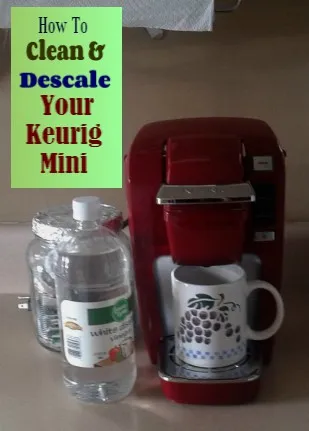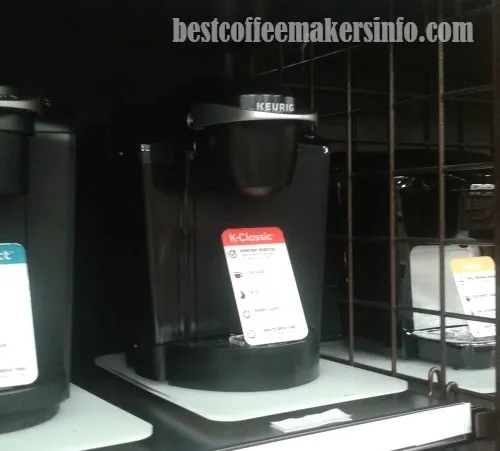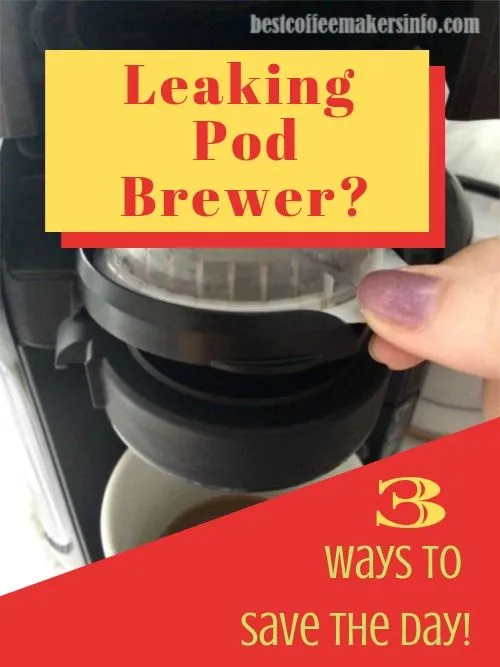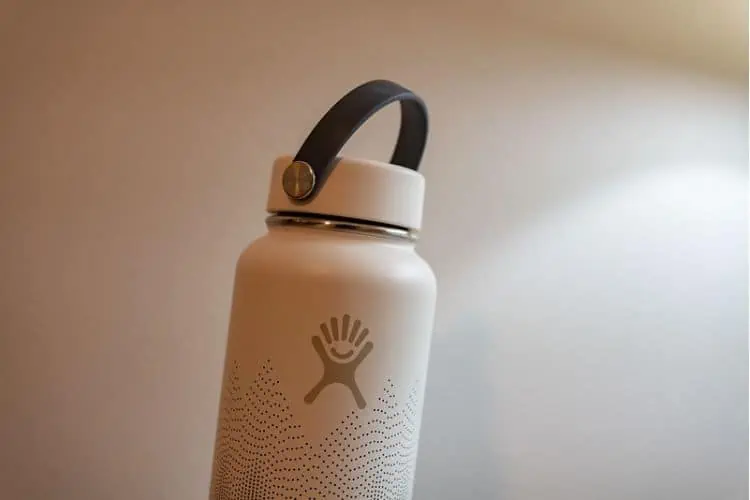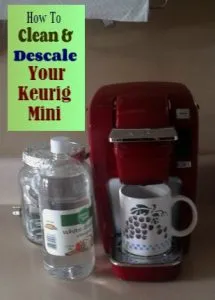 How To Clean A Mini Keurig Easily With the Least Stress
How To Clean A Mini Keurig Easily With the Least Stress
In this post, I’m going to show you how to clean a mini Keurig the way I do on my own! I love small appliances, but I get the impression they seem to get dingier more quickly.
Between frequent use and their small volume, it makes for a scenario of quicker buildup.
Even though the Keurig K10 mini doesn’t have a reservoir like some of its 1.0 model cousins, it still needs to be approached with periodic descaling and some elbow grease on the inner anatomy so this baby will operate in tip-top condition.
[toc]
The method I’m about to show you will work with the Keurig K10, K31 and K15 models equally since they are very similar in size, interior makeup and performance. It’s pretty close to the way you’d tackle one of its larger cousins, but a slightly different approach for small or absent reservoirs.
Cleaning a Mini Keurig – First The Removable Parts!
For the outside superficial areas I like to use a dry microfiber cleaning cloth, you may have seen them, they are soft to the touch and pick up dust easily (do NOT use solvents please.)
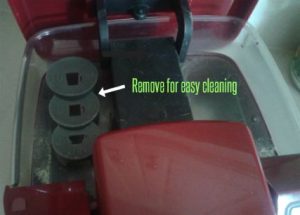
Before doing this task, you need to remove the little water level indicator to get around the area underneath since build-up can get in there too. It comes off easily since it has only little slots it fits into.
Also, remove the funnel-shaped brew holder assembly. It can be tricky but once you get the hang of it…it’s pretty much all about being careful of the inside piercing needle. I go in from the bottom and push up a little…see where my fingers are showing here:
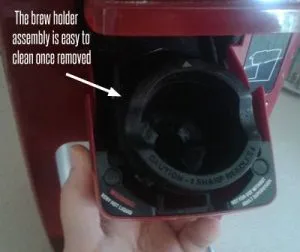
The water level indicator, drip tray and brew holder assembly can be washed by hand separately using a little dishwashing liquid and rinsed thoroughly.
As the brew holder has kind of a funnel shape, you can use a bent paper clip to poke through the opening and push out any loose ground debris that way.
For the procedure, consider the use of a bottle brush, or an old toothbrush. For the reason they are great for easily getting into little nooks and crannies, I never throw away an old toothbrush! Perfect for use with this particular task; a reservoir-less single-cup coffeemaker is a perfect scenario.
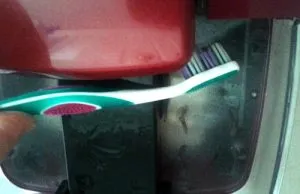
For the obvious reason you can’t use soap in this area, create a little vinegar-h20 mixture and use the old toothbrush to go around the perimeter of the reservoir and the inside of the brew chamber, as stray grounds tend to stick in there easily.
 Procedure To Descale A Mini Keurig
Procedure To Descale A Mini Keurig
Since the Mini doesn’t have a setting like the larger models that will tell you when it’s time to descale, we have to remember to do so every few months depending on how much use.
You can use distilled white vinegar or a good descaling solution as the tablets individually may be too strong for this smaller volume. For the liquid descale solution, you want to decrease the amount used normally than with the large reservoir models (about a third of what the labeling recommends.)
Pour in some clean filtered water into the compartment; its max capacity is about 10 oz. Place a mug under the dispensing area, Turn the power on and raise the lever, but hold it for about 5 seconds so it’ll empty all the way into the tank.
Generally, I do not like to use full-strength vinegar here. Even though it’s a dynamite household cleaning agent; it’s still acidic and too strong an amount is not good for the more sensitive interior anatomy inside the coffee maker that we can’t see. I always dilute it by half. Since the max capacity is 10 oz I go with about 5 oz of vinegar and 5 oz of water, respectively.
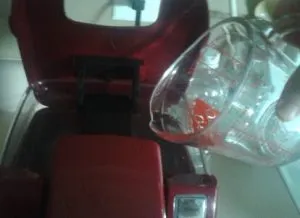
(Remember all this is done WITHOUT a K-cup)
Lower the handle and when you see the brew button flash in blue, push it in which case it will start flashing in red and then go to a steady red.
After the cycle, the mug has filled with the water/vinegar, proceed to empty the contents into the sink. Now proceed to do a “rinse and repeat” with the above steps BUT this time when the light goes steady red again this time, turn it off and let set for half an hour. Then pick up where you left off by turning it back on, lift and lower the handle and run another “brew” cycle. Now it will dispense again into the mug.
You’ll probably see a little stray debris here and there, depending on how much buildup there has been. This is normal.
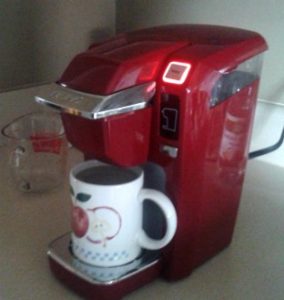
Now what you want to do is another “rinse and repeat” BUT this time with only clean H20. It may take about 2-3 cycles until the vinegar smell is no longer noticeable.
Helpful Tip: You may want to replace the brew holder assembly thingy back in after washing when you do the descale if you have concerns about getting splashed accidentally with hot vinegar/h20. Some people may not have this happen but do want to point that out just in case.
Conclusion
Now you know how to successfully clean your mini Keurig coffee maker! I think the key here is to stay on top of the “when’s”…try to make it a routine every three months at least, if you’re using filtered water.
Hope this is of help to you, and remember this method will work for other more compact reservoir-less single-cuppers as well.




